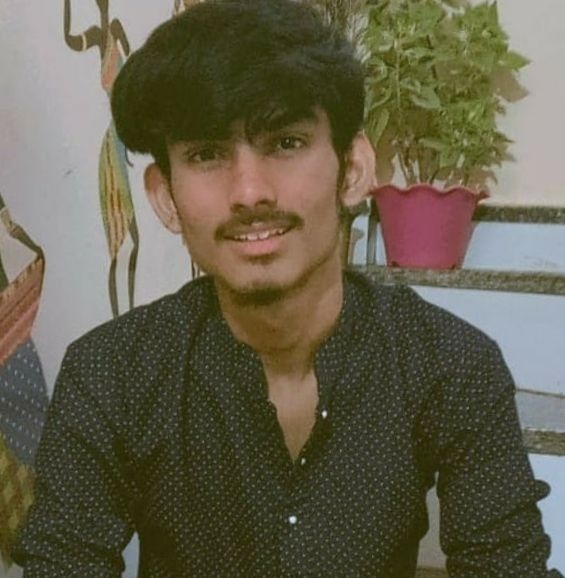A Pattern of Jihad: 53 Hindu Families Fall Prey to Muslim Radicalisation in Just 9 Months
Targeted killings of Hindus by radicalised Muslims expose growing ideological extremism across urban and rural Bharat.
Total Views |

For years, a section of the media has worked to frame Muslims as victims and Hindus as oppressors, creating an illusion that minorities remain under constant threat from so-called “fascist” Hindus with the complicity of the state. The reality, however, paints a starkly different picture. Hindus have repeatedly suffered targeted hate crimes in Bharat, often brutally murdered, lynched, or attacked without provocation, especially by Islamist radicals.
These attackers strike with precision and audacity. They enter shops and homes disguised as customers and walk out after stabbing or beheading their Hindu targets. Some don saffron attire to hide their intent, strike with sharp weapons, and walk away unfazed. Whether in temples, ashrams, or public spaces, they leave no Hindu safe, not even saints, not even children.
Between February and October 2025 alone, Bharat reported 53 incidents in which Hindus lost their lives in targeted acts of violence by radicalised Muslims. These killings reflect a dangerous undercurrent of ideological hatred, fuelled by Jihadist narratives and supported through networks both online and offline.
The following list documents these attacks, spread across 53 locations in 14 different states:
1. 21 October 2025 – Saharanpur, Uttar Pradesh
2. 19 October 2025 – Mira Road, Maharashtra
3. 19 October 2025 – Prayagraj, Uttar Pradesh
4. 19 October 2025 – Muzaffarnagar, Uttar Pradesh
5. 15 October 2025 – Sonipat, Haryana
6. 17 October 2025 – Nanded, Maharashtra
7. 12 October 2025 – Aligarh, Uttar Pradesh
8. 9 October 2025 – Alwar, Rajasthan
9. 30 September 2025 – Rampur, Uttar Pradesh
10. 30 September 2025 – Hardoi, Uttar Pradesh
11. 29 September 2025 – Ujjain, Madhya Pradesh
12. 28 September 2025 – Sagar, Madhya Pradesh
13. 28 September 2025 – Dehradun, Uttarakhand
14. 16 September 2025 – Mumbai, Maharashtra
15. 3 September 2025 – Jaisalmer, Rajasthan
16. 2 September 2025 – Kasganj, Uttar Pradesh
17. 29 August 2025 – Mohali, Punjab
18. 28 August 2025 – Delhi NCR
19. 19 August 2025 – Muzaffarnagar, Uttar Pradesh
20. 18 August 2025 – Ahmedabad, Gujarat
21. 18 August 2025 – Maihar, Madhya Pradesh
22. 13 August 2025 – Rehli (Sagar), Madhya Pradesh
23. 9 August 2025 – Varanasi, Uttar Pradesh
24. 3 August 2025 – Koppal, Karnataka
25. 31 July 2025 – Hapur, Uttar Pradesh
26. 30 July 2025 – Tonk, Rajasthan
27. 28 July 2025 – Bijnor, Uttar Pradesh
28. 25 July 2025 – Ranchi, Jharkhand
29. 24 July 2025 – Indore, Madhya Pradesh
30. 22 July 2025 – Siwan, Bihar
31. 21 July 2025 – Lucknow, Uttar Pradesh
32. 20 July 2025 – Ajmer, Rajasthan
33. 15 July 2025 – Bhopal, Madhya Pradesh
34. 13 July 2025 – Ghaziabad, Uttar Pradesh
35. 12 July 2025 – Burhanpur, Madhya Pradesh
36. 10 July 2025 – Kolkata, West Bengal
37. 9 July 2025 – Kanpur, Uttar Pradesh
38. 6 July 2025 – Sitapur, Uttar Pradesh
39. 3 July 2025 – Bhilwara, Rajasthan
40. 29 June 2025 – Gaya, Bihar
41. 27 June 2025 – Meerut, Uttar Pradesh
42. 25 June 2025 – Moradabad, Uttar Pradesh
43. 20 June 2025 – Baramulla, Jammu & Kashmir
44. 16 June 2025 – Nagpur, Maharashtra
45. 10 June 2025 – Azamgarh, Uttar Pradesh
46. 2 June 2025 – Purnia, Bihar
47. 24 May 2025 – Budaun, Uttar Pradesh
48. 10 May 2025 – Jhansi, Uttar Pradesh
49. 29 April 2025 – Palwal, Haryana
50. 17 April 2025 – Bareilly, Uttar Pradesh
51. 14 March 2025 – Sambhal, Uttar Pradesh
52. 28 February 2025 – Hyderabad, Telangana
53. 20 February 2025 – Malda, West Bengal
From Saharanpur in Uttar Pradesh to Malda in West Bengal, from Baramulla in Jammu & Kashmir to Hyderabad in Telangana, the violence has shown no geographical boundaries. Each killing carried a unique trigger - personal disputes, neighbourhood tensions, political provocations - but the victims remained the same: ordinary Hindus, caught unprepared in sudden bursts of brutal violence and eliminated simply for being Hindu.
Local reports and subsequent investigations in many cases confirmed a clear pattern of targeted hate. These were not random acts but carefully planned assaults. Many happened in urban belts, where communal rumours were spread rapidly through social media networks run by radical elements from the Muslim community. This propaganda radicalised groups of young men, who then sought out Hindus and executed attacks in the name of Jihad.
What is even more disturbing is the deliberate nature of these attacks. Assailants waited silently for their targets, conducting reconnaissance, planning escape routes, and choosing locations that made investigations difficult. Some communities live in constant fear, unsure when the next attack might strike.

The national narrative around extremism must now confront this uncomfortable truth: Jihadist radicalisation has taken root in pockets across Bharat. The spate of killings reveals not just individual crimes but an ideological war against Hindus, one that is being waged with disturbing silence from the so-called secular lobby.
As the debate around hate crime grows louder, the Indian state faces an urgent question: how long will the victims of Hindu identity remain invisible in global discourse?
The pattern of these killings cannot be ignored. Justice for the victims is vital - but equally urgent is the task of societal introspection. Why are Hindu citizens being targeted again and again? What forces are fuelling this hatred? And who is protecting those who are caught in this radical storm?
Until these questions find straight answers, Hindu lives will continue to fall prey to an organised, ideological pattern of violence masquerading as marginalisation.
Report by

Kewali Kabir Jain
Journalism Student, Makhanlal Chaturvedi National University of Journalism and Communication

